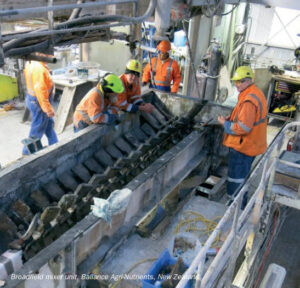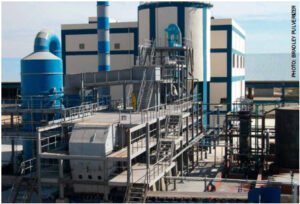Part 5 of a 5-part blog series: “Minimizing Heavy Metals in Superphosphate Manufacturing”
 Part 1 of the blog series introduced the problems that heavy metals present in the SSP manufacturing process as well as a refresher of SSP production in the Bradley Broadfield Process. Part 2 provided a background to the environmental considerations that must be addressed in SSP manufacturing. Part 3 presented rock blending as the way to minimize heavy metals in the process. Part 4 discussed the process for determining the ideal rock blend. Click Here to download the complete article in pdf format as published by BCInsight Ltd in Fertilizer International Nov|Dec 2023, issue 517, pp. 53-57.
Part 1 of the blog series introduced the problems that heavy metals present in the SSP manufacturing process as well as a refresher of SSP production in the Bradley Broadfield Process. Part 2 provided a background to the environmental considerations that must be addressed in SSP manufacturing. Part 3 presented rock blending as the way to minimize heavy metals in the process. Part 4 discussed the process for determining the ideal rock blend. Click Here to download the complete article in pdf format as published by BCInsight Ltd in Fertilizer International Nov|Dec 2023, issue 517, pp. 53-57.
In-line process optimization
Actual process conditions within the Broadfield superphosphate unit are only fully measurable during full scale production. In-line process sampling and testing is non-disruptive and the ideal way to maximize plant profitability by ensuring continuous production with minimal shutdowns.
As this blog series and article makes clear, superphosphate fertilizer production is always subject to unexpected changes in process conditions (temperature, rock chemistry, reaction times, etc.). Increases in iron, aluminum and magnesium levels, for example, introduce undesirable effects by:
- Preventing the A:R ratio being reached
- Consuming more acid
- Making the ex-den product sticky
Fortunately, the Broadfield unit can be mechanically adjusted to compensate for these changes by increasing:
- The fineness of the rock
- The residence time in the mixer or den
- The reaction temperature within process restraints
In fact, the Broadfield mixer, with its horizontal trough design, is specifically engineered to compensate for many of the variations frequently encountered during the acidulation process, as described in this article, such as changes in phosphate rock composition. In particular, the mixer’s low speed means it can hold materials for longer and therefore slow down processing times if necessary. Indeed, the ability of the Broadfield mixer to alter residence time, and the operational flexibility this provides, is a valuable characteristic that enables superphosphate producers to make process improvements that increase product quality worldwide.
Return to Part 1 – Minimizing Heavy Metals in Superphosphate Manufacturing
Back to Part 4 – Determining the Ideal Rock Blend in SSP Manufacturing
Contact us and we will evaluate and optimize your SSP manufacturing process


